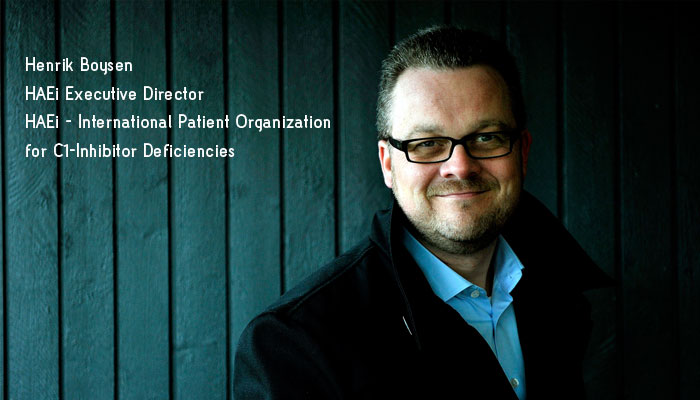Electronic Medical Records (EMRs), or computer-based medical records of patients, have already gained importance in the western world with governments taking up initiatives to implement them across the nations. Comparatively, in Asia, esp. in countries like India and China, there is a long way to go before the benefits of EMRs can be realized.

Madhav Ragam
Director, Healthcare & Life-sciences
1. High costs of implementing EMRs have been a major worry for hospitals in the west of late. As a leading developer of archiving software for healthcare, what are IBM’s views on this?
The return for hospitals to invest in an electronic medical record solution far outweighs the initial cost of implementing the systems.
IBM is very confident that we have the healthcare industry experience and technology expertise to assist hospitals in ensuring that their electronic medical record investment reaps the benefits they are seeking.
(*Note: In June 2005 – IBM acquired the ‘Healthlink’ company, which had a dedicated healthcare practice focused on clinical and business process optimization, delivered via IT Strategy and Implementation Services. The Healthlink professionals have extensive industry and vendor knowledge with large-scale, multi-entity implementation experience – consistently ranked as No 1 for Healthcare consulting firms and has 100% client referenceability. 60% of Healthlink consultants have more than 16 years of relevant healthcare business, clinical and IT operational experience.)
2. What is a good strategy a hospital can employ when implementing EMRs?
The first step a hospital needs to take before embarking on any electronic medical record system implementation is to engage all internal stakeholders (e.g. the physicians, nurses etc) early in the project.
Secondly, there needs to be an enforcement of key guidelines and standards so that the new EMR system is compatible with the other hospital systems.
The last thing the hospital wants to happen is for another ‘silo system’ to emerge. The advice to hospitals is do not add EMR as another non-compatible system, you need to consider very early on how is it going to co-exist with your existing hospital systems.
Thirdly, hospitals need to use the right implementation expertise in combination with the right change management expertise in order to implement a successful electronic medical record system. They should not attempt to do it themselves, with only their in-house expertise or just relying on the ISV to implement, as this will result in a less than perfect outcome.
Here are other critical success factors to keep in mind:
- Governance – overall structure, clinical involvement, roles, responsibilities and schedule, sustainability
- Physician Leadership – organizational, departmental, champion development
- Training and Support – clinical training strategy, tools, resources
- Communication Strategy – communication plan, methods, feedback loop
- Workflow Redesign – clinician workflow, changes from current state, opportunities for best practice adoption, addressing concerns
- Value Realization – targeted redesign with improved clinical and financial outcomes
- Vendor Capabilities – maximizing vendor functionality and mitigating known risks
- Clinical Content Management – content strategy, standardization, development and maintenance
- Key Decision Making – clinical and executive decision making up front around both the process and the technology
- Project Management Office – project plan development, staffing, responsibilities
IT Infrastructure – devices, access and security issues
3. Interoperability and privacy of medical data have emerged as significant challenges for EMRs, which of these is a bigger challenge and how can hospitals and software developers counter them?
Both interoperability and privacy are equally important in the implementation of an electronic medical record system. Privacy is clearly crucial to ensure the quality of the data in the medical records. If your system is not interoperable or does not have a solid privacy policy and/or guideline, your data will suffer and it will defeat the purpose of embarking on any EMR program implementation. The key question for hospital here then becomes – Do you have the key processes for the operation of this EMR system in place or not? The eGovernance of the IT infrastructure and processes are crucial to the success of an EMR program.
4. What challenge does a hospital face during and after the implementation of EMR?
The number one challenge for hospital implementing and electronic medical record system is to ensure there is a realistic understanding of the return on investment by all the stakeholders. This means also being totally transparent about the initial up-front costs of implementation the EMR system. The second most important challenge is to avoid the ‘silo system’ result by ensuring up-front that the EMR systems are interconnected with all the other applications running at the hospital.
5. In countries like India and China, where the healthcare system is still evolving, what challenges would the implementation of EMRs across a region face?
Although the challenges of China and India differ somewhat based on the specific healthcare systems of each country, the one challenge they both have in common is that of setting up integrated delivery networks. For example, in China, in particular, one of the challenges faced is that irrespective of the severity of their illness, most patients will go to the tertiary care centre (i.e. the major hospitals) because they believe they will receive better care where all the specialists are located. The reality is that not every patient needs to continue to go to the tertiary hospitals to receive care. More often than not, a general practitioner (i.e. a primary care giver) can treat the patient just as effectively. So, there is a need for China to set up an integrated healthcare delivery system where patients can be referred to a general practitioner (primary care giver) after their first visit at a hospital (tertiary care giver) in order to reduce unnecessary costs. The same type of considerations will be valid for India also.
6. Are the high costs likely to restrict the growth of EMRs in Asia to a limited number of countries?
No. Previously most hospitals looked at setting up an EMR system on their own. However, through the initial phases of setting up integrated healthcare delivery networks, many hospitals are now looking at the concept of a shared EMR system, which will quite clearly lower the costs.
7. What challenges, specific to Asia, exist in the growth of EMRs in the region?
One of the most important challenges for the growth of EMRs is to avoid the ‘silo system’ mentality and to ensure the proposed EMR systems are not only interconnected with all the other applications running at the hospital, but also possibly other hospital networks too. Also the issue of prescription compliance is of major concern. By that I mean, two doctors have the same patient but both issue different levels of prescriptions for the same illness. Often, this can be due to a particular doctor’s connection to a certain pharmaceutical company. Such discrepancies become very apparent once an EMR and a data warehousing solution are in place – which is likely to meet with some resistance by certain doctors to implement.
8. Any other issues you would like to comment up on?
Overall, the Public Health systems – given such outbreaks as SARS and the Bird Flu – needs to have a greater priority.
The implementation of electronic medical records is very much focused on increasing efficiencies in the hospital system, however, the challenge is then how to use that information to improve the overall patient experience.
The importance of getting a patient view in the delivery of a better healthcare system is very much becoming an increasing focus for the care giver as they ask themselves the question – what measures can we take with this information to be more proactive than reactive? And, at IBM, we believe that with our open and collaborative technology; leading business solutions, participation within and across the healthcare ecosystem; and end-to-end capabilities we are the right partner for moving helping hospitals to move towards patient-centric healthcare.




